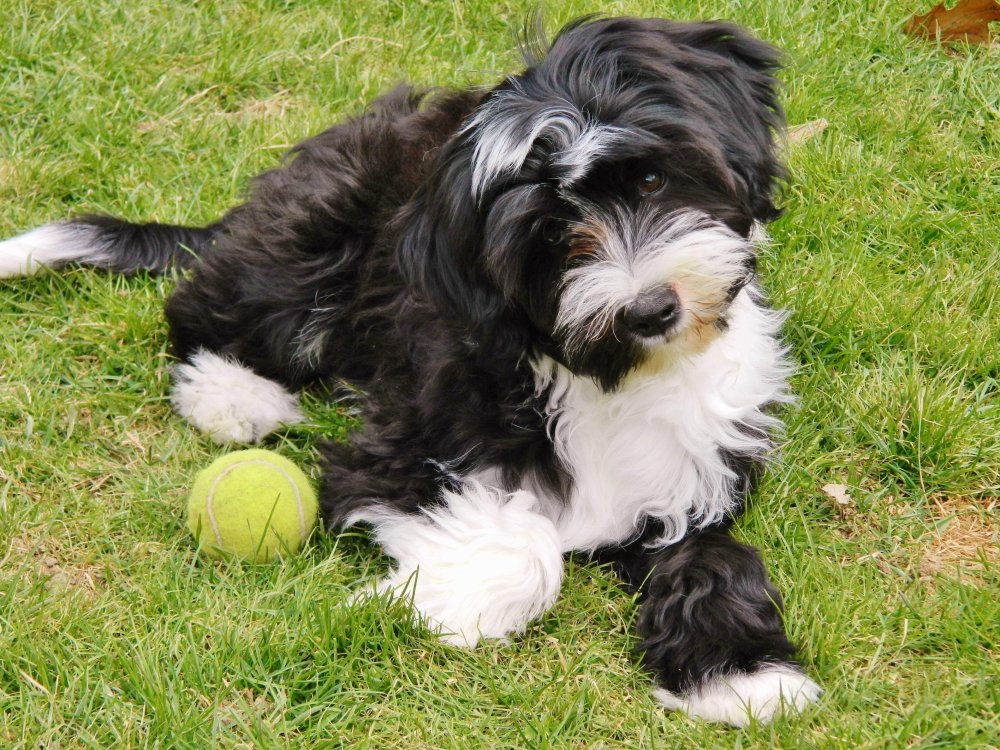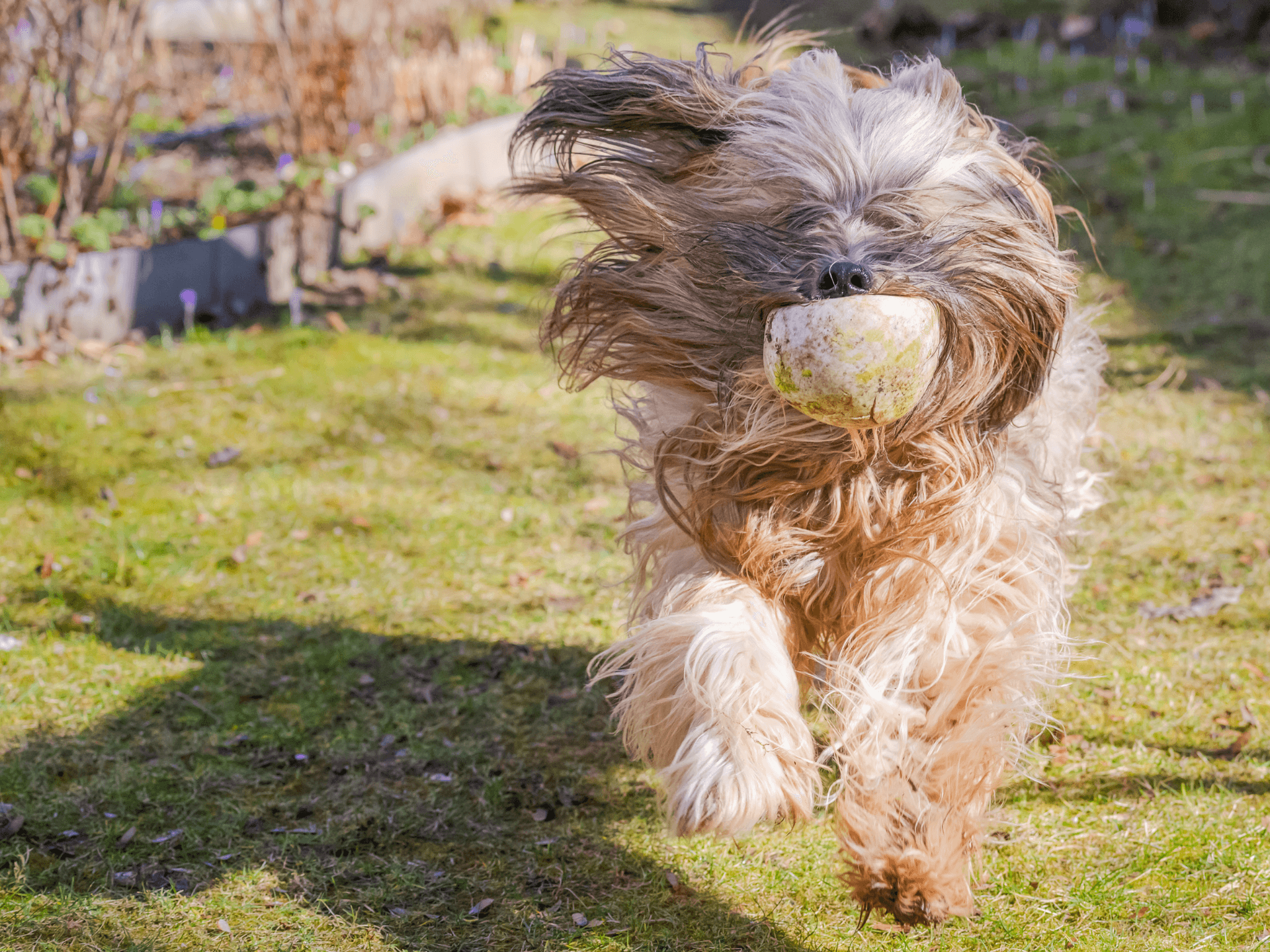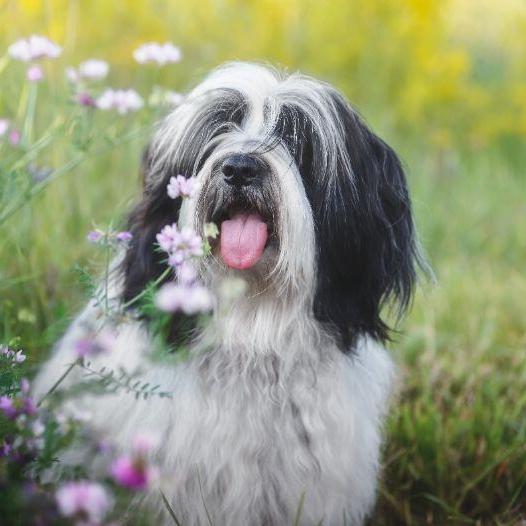- Breed Category: Non-sporting group
- Country of Origin: Tibet
- Average Height: 36-41 cm (14-16 in)
- Average Weight: 8-14 kg (18-31 lbs)
- Average Life Span: 12-15 years
- Grooming Requirements: High, regular brushing needed
- Exercise Requirements: Moderate, daily walks
- Coat Type: Long, double coat
- Coat Color Variations: White, gold, black, tricolour
- Shedding Level: Low
- Ear Type: Pendant
- Tail Type: Curled over back
- Temperament: Affectionate, loyal, alert
- Intelligence Level: High
- Barking Tendency: Moderate
- Compatibility with Children: Good with older children
- Compatibility with Other Pets: Generally good
- Training Ease: Moderate, can be stubborn
- Common Health Issues: Hip dysplasia, eye disorders
- Dietary Needs: Balanced diet, avoid overfeeding
- Energy Level: Moderate
- Drooling Tendency: Low
- Sensitivity to Weather: Sensitive to heat
- Overall Maintenance Level: High
- Original Purpose: Companion, herding dog
- Year of Recognition by Kennel Clubs: 1930s
- Apartment Friendly: Yes, with sufficient exercise
- Best Suited For: Families, active individuals
- Cost of Ownership: Moderate to high
- Unique Traits: Snowshoe-like feet, keen hearing
- Cultural Significance: Considered good luck in Tibet
- Popularity Rank: Moderately popular
Think all small dogs are just lap warmers? The Tibetan Terrier might surprise you. This breed, despite its name, isn’t a terrier at all. It’s a medium-sized dog with a big heart and a history as rich as its luxurious coat. Known for their friendly and adaptable nature, Tibetan Terriers are more than just pretty faces.
Originating from the remote monasteries of Tibet, these dogs were cherished as companions and good luck charms. They were never sold, only gifted, which speaks volumes about their value. Their history is intertwined with the spiritual and cultural fabric of Tibet, making them unique among dog breeds.
This article will delve into the Tibetan Terrier’s characteristics, history, and care, offering insights into what makes this breed truly special.
The Tibetan Terrier: A Glimpse into Its Rich Heritage

Early Development of the Breed
The Tibetan Terrier’s roots trace back to the ancient monasteries of Tibet, where they were bred not for hunting or herding, but as companions and guardians. Their development was shaped by the harsh climate and rugged terrain, resulting in a breed that is both resilient and adaptable. These dogs were considered sacred, often referred to as “Holy Dogs of Tibet,” and were believed to bring good fortune.
Role in Tibetan Culture and Monasteries
In Tibetan culture, these dogs were more than just pets; they were integral to the spiritual life of the monasteries. Monks valued them for their loyalty and intelligence, often relying on them to alert them to visitors or intruders. Their presence was seen as a blessing, and they were treated with great respect and care.
Key Historical Figures and Events
One notable figure in the breed’s history is Dr. Agnes Greig, who introduced the Tibetan Terrier to the Western world in the 1920s. Her efforts in breeding and promoting the breed helped establish its popularity outside of Tibet. The breed’s recognition by major kennel clubs in the mid-20th century marked a significant milestone in its global journey.
Physical Characteristics
Tibetan Terriers are known for their distinctive appearance. They have a sturdy, medium-sized build with a profuse double coat that protects them from the elements. Their large, expressive eyes and unique “snowshoe” feet are perfectly suited for navigating snowy terrains. Despite their name, they are not true terriers, lacking the typical terrier temperament.
Appearance and Unique Traits
The Tibetan Terrier stands out with its medium-sized, sturdy frame and a luxurious double coat that comes in a variety of colours, including white, black, gold, and tricolour. Their coat is not just for show; it’s a practical feature that shields them from harsh weather. One of their most distinctive traits is their large, flat feet, often referred to as “snowshoe” feet, which help them navigate snowy and rugged terrains with ease.
Temperament and Behaviour
These dogs are known for their friendly and adaptable nature. They’re not your typical terrier, as they lack the feisty temperament often associated with the name. Instead, Tibetan Terriers are gentle, intelligent, and deeply loyal to their families. They thrive on companionship and are known to be excellent with children and other pets. Their alertness makes them great watchdogs, always ready to alert their owners to anything unusual.
Personality Traits and Suitability as a Family Pet

Typical Personality Traits
Tibetan Terriers are affectionate, intelligent, and independent. They form strong bonds with their families, often showing a deep loyalty that makes them wonderful companions. Their intelligence shines through in their problem-solving abilities and quick learning, while their independent streak means they can entertain themselves when needed.
Suitability as a Family Pet
These dogs are well-suited to family life. Their gentle nature and adaptability make them a great fit for households with children and other pets. They thrive in environments where they can be part of the daily hustle and bustle, enjoying the company of their human family members.
Interaction with Children and Other Animals
Tibetan Terriers are known for their patience and playfulness with children. They enjoy interactive play and can be quite protective of younger family members. With other animals, they are generally sociable, especially if introduced properly and early on.
Training and Exercise Needs
Training a Tibetan Terrier is usually a rewarding experience due to their intelligence and eagerness to please. Consistent, positive reinforcement methods work best. While they don’t require excessive exercise, regular walks and playtime are essential to keep them healthy and happy. Their alert nature also benefits from mental stimulation through games and training exercises.
Training, Exercise, and Health of the Tibetan Terrier

Importance of Early Training and Socialisation
Getting a head start on training and socialisation is crucial for Tibetan Terriers. These dogs are naturally intelligent and curious, so introducing them to various environments, people, and other animals early on helps them grow into well-rounded adults. This early exposure reduces the risk of behavioural issues and ensures they adapt well to different situations.
Recommended Training Techniques
When it comes to training, Tibetan Terriers respond best to positive reinforcement. They thrive on praise, treats, and play, making these effective tools in teaching commands and tricks. Consistency is key, as is keeping sessions short and engaging to maintain their interest.
Daily Exercise Requirements and Activities They Enjoy
While Tibetan Terriers don’t need hours of exercise, they do enjoy regular walks and playtime. A couple of brisk walks a day, combined with some interactive play, will keep them fit and content. They also love activities that challenge their minds, like puzzle toys and agility games.
Health and Lifespan
Generally healthy, Tibetan Terriers have a lifespan of around 12 to 15 years. Regular vet check-ups, a balanced diet, and proper grooming are essential to keep them in top shape. Like all breeds, they can be prone to certain genetic conditions, so responsible breeding and health screenings are important.
Health and Care of the Tibetan Terrier

Common Health Issues
Tibetan Terriers are generally healthy, but like any breed, they can be prone to certain health issues. Common concerns include hip dysplasia, progressive retinal atrophy, and lens luxation. Regular vet check-ups are crucial to catch any potential problems early.
Average Lifespan and Health Tips
With proper care, Tibetan Terriers typically live between 12 to 15 years. To keep them healthy, ensure they have a balanced diet, regular exercise, and mental stimulation. Keeping their weight in check is also important to prevent joint issues.
Preventative Care Recommendations
Preventative care is key to a long, healthy life. Regular vaccinations, flea and tick prevention, and dental care should be part of their routine. Annual health screenings can help detect any genetic conditions early.
Grooming and Maintenance
Their luxurious double coat requires regular grooming to prevent matting. Brushing a few times a week and occasional baths will keep their coat in top condition. Regular trimming of their nails and cleaning of their ears are also essential parts of their grooming routine.
Coat Care and Grooming Routines

Shedding and Seasonal Grooming Tips
The Tibetan Terrier’s coat is a standout feature, but it does require some attention. Regular grooming is essential to keep their double coat looking its best. During shedding seasons, typically in spring and autumn, you’ll notice an increase in hair loss. This is the perfect time to up your grooming game. A thorough brush a few times a week will help manage shedding and prevent mats from forming.
Invest in a good quality brush and set aside time for grooming sessions. Not only does this keep their coat healthy, but it also strengthens your bond with your furry friend. Occasional baths are also recommended, especially if they get into something messy. Just be sure to use a dog-friendly shampoo to avoid skin irritation.
Diet and Nutrition
A balanced diet is crucial for the overall health of your Tibetan Terrier. These dogs thrive on high-quality dog food that meets their nutritional needs. Look for options rich in protein and healthy fats, as these support their energy levels and coat health. Avoid overfeeding, as maintaining a healthy weight is important to prevent joint issues.
Consult with your vet to determine the best diet plan, considering factors like age, activity level, and any specific health concerns. Fresh water should always be available, and treats should be given in moderation to avoid unnecessary weight gain.
Nutritional Needs and Feeding Guidelines for Tibetan Terriers

Nutritional Needs for Optimal Health
To keep your Tibetan Terrier in top shape, focus on a diet rich in high-quality proteins and healthy fats. These nutrients support their energy levels and maintain their luxurious coat. Look for dog food that lists meat as the first ingredient and includes omega-3 and omega-6 fatty acids.
Foods to Include and Avoid
Include lean meats, fish, and vegetables in their diet. Avoid foods with artificial additives, fillers, and excessive grains, as these can lead to allergies and digestive issues. Steer clear of chocolate, grapes, and onions, which are toxic to dogs.
Feeding Schedules and Portion Recommendations
Feed your Tibetan Terrier twice a day to maintain consistent energy levels. Portion sizes depend on their age, weight, and activity level, so consult your vet for personalised advice. Always provide fresh water and monitor their weight to prevent obesity.
Fun Facts and Trivia
Did you know Tibetan Terriers were once considered sacred in Tibet? They were often given as gifts to bring good luck. Despite their name, they aren’t true terriers but are known for their agility and intelligence, making them great at dog sports like agility and obedience.
Interesting Tidbits and Famous Tibetan Terriers

Interesting Tidbits about the Breed
Tibetan Terriers are often called the “Holy Dogs of Tibet,” a nod to their revered status in their homeland. Despite their name, they aren’t true terriers. Instead, they belong to the non-sporting group, known for their agility and intelligence. Their unique “snowshoe” feet are not just for show; they help these dogs navigate snowy terrains with ease. This breed is also known for its longevity, often living well into their teens with proper care.
Famous Tibetan Terriers in Media or History
One of the most famous Tibetan Terriers was “Bunti,” owned by Dr. Agnes Greig, who played a pivotal role in introducing the breed to the Western world. Bunti’s lineage helped establish the breed’s presence in Europe and beyond. In media, Tibetan Terriers have made appearances in various films and TV shows, often cast for their distinctive looks and charming personalities. Their intelligence and trainability make them a favourite choice for roles requiring a bit of canine charisma.
Final Thoughts
The Tibetan Terrier is a unique and cherished companion. With its rich history and adaptable nature, this breed offers both charm and loyalty to its owners. While they require dedicated grooming and training, the rewards of having such an affectionate and intelligent pet are immense. Embracing a Tibetan Terrier means welcoming a piece of Tibetan culture and spirituality into your home. Consider this breed if you’re ready for a devoted and lively addition to your family.
